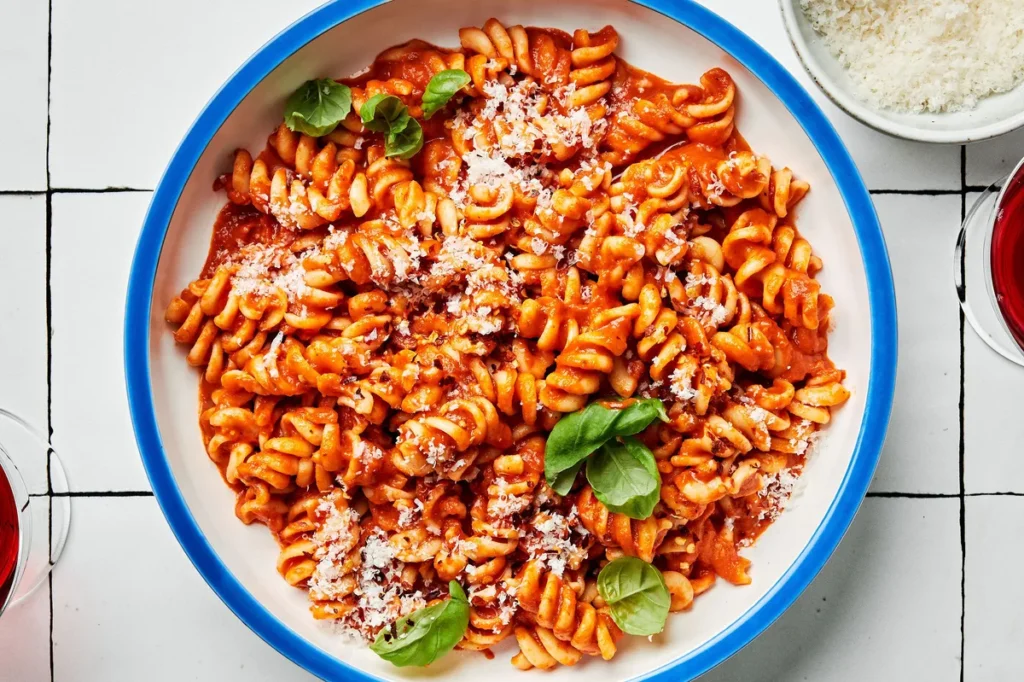Fusilli derived from the Italian word “fuso,” meaning spindle, is a beloved variety of pasta characterized by its distinctive corkscrew or helical shape. This pasta has garnered popularity worldwide for its versatility in culinary applications and its ability to hold sauces and ingredients effectively. In the United States, fusilli is often referred to as rotini, highlighting the similarities in appearance and culinary usage. In this comprehensive exploration, we delve into the origins, variations, and culinary potential of fusilli pasta.
Origins and Evolution
The origins of fusilli trace back to Italy, where pasta-making has been a culinary tradition for centuries. The exact historical timeline of fusilli’s creation is not well-documented, but it is believed to have originated in Southern Italy, particularly in regions like Campania and Sicily. Pasta-making in Italy has always been influenced by regional ingredients, customs, and traditions, resulting in a diverse array of pasta shapes and varieties.
Fusilli’s unique shape is achieved by rolling or extruding pasta dough into thin ropes and then twisting them around a rod or knitting needle. This process creates the distinctive corkscrew shape that defines fusilli. Traditionally, fusilli was handmade, but with advancements in pasta-making technology, it is now mass-produced using machinery, ensuring consistency in shape and texture.
Varieties of Fusilli
Fusilli comes in various forms, each offering its own distinct characteristics and culinary possibilities. The most common varieties include:
Plain Fusilli: This is the traditional fusilli made from durum wheat flour and water. It boasts a neutral flavor profile, making it an ideal canvas for a wide range of sauces and ingredients.
Whole Wheat Fusilli: For those seeking a healthier alternative, whole wheat fusilli is made from whole grain flour, retaining more nutrients and fiber compared to plain fusilli. It has a slightly nuttier flavor and a firmer texture.
Colored Fusilli: One of the most appealing aspects of fusilli is its ability to take on different colors and flavors by incorporating various ingredients into the dough. Common examples include:
Red Fusilli: Achieved by mixing ingredients like beetroot or tomato into the dough, resulting in a vibrant red hue and a subtle earthy or tangy flavor.
Green Fusilli: Spinach is often used to impart a verdant green color to fusilli while adding a hint of freshness to the flavor profile.
Black Fusilli: Cuttlefish ink is utilized to create black fusilli, offering a striking visual contrast and a subtly briny taste.
These colored varieties not only enhance the visual appeal of dishes but also introduce unique flavor profiles, adding depth and complexity to pasta-based recipes.
Culinary Applications
Fusilli’s versatility extends beyond its aesthetic appeal; it is prized by chefs and home cooks alike for its ability to pair well with a myriad of sauces, proteins, and vegetables. Its spiral shape allows it to trap and hold onto sauces, ensuring that each bite is infused with flavor. Here are some popular culinary applications of fusilli:
Classic Pasta Dishes: Fusill’i serves as the foundation for classic pasta dishes such as pasta primavera, pasta salads, and pasta alfredo. Its shape and texture complement creamy, tomato-based, and oil-based sauces alike, making it a versatile choice for a wide range of recipes.
One-Pot Meals: Fusill’i is well-suited for one-pot meals where pasta is cooked along with other ingredients such as vegetables, meats, and broth. This approach simplifies the cooking process and results in hearty, satisfying dishes like pasta e fagioli and minestrone soup.
Baked Pasta Dishes: Fusilli’s sturdy structure makes it an excellent choice for baked pasta dishes such as baked ziti and pasta casseroles. When combined with cheese, sauce, and other ingredients, fusill’i retains its shape and texture during baking, resulting in comforting, crowd-pleasing meals.
Cold Pasta Salads: Fusilli’s ability to hold its shape and absorb flavors makes it an ideal choice for cold pasta salads. Mixed with vegetables, herbs, and a tangy vinaigrette, fusill’i salad is a refreshing and satisfying dish, perfect for picnics, barbecues, and potlucks.
Conclusion
Fusill’i with its distinctive corkscrew shape and versatility, has become a staple in kitchens around the world. From traditional Italian recipes to innovative culinary creations, fusill’i offers endless possibilities for creative expression and culinary exploration. Whether enjoyed with a classic tomato sauce, tossed with seasonal vegetables, or baked into a cheesy casserole, fusill’i continues to captivate palates and inspire culinary creativity across cultures. So the next time you’re craving pasta, consider reaching for a box of fusill’i and embark on a delicious culinary adventure. Buon appetito!







